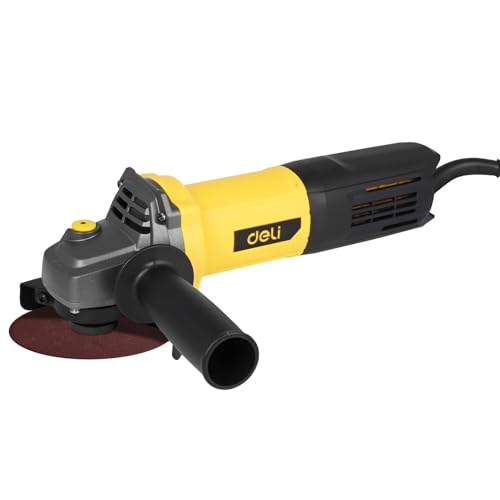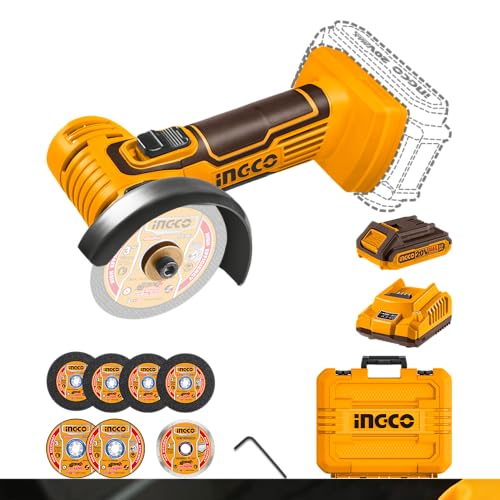Angle Grinder Safety TBT – Toolbox Talk
Safety of angle grinder (Toolbox talk), or TBT, is crucial to make safe workplace, free from hazards and teaching employees about correct handling. Although angle grinders are powerful hand tools, using them incorrectly can cause serious harm.
Below Angle Grinder Safety TBT ensure that each employee knows how to operate this tool in a safe and efficient manner.
Examine the tool carefully before using it. Look for loose connections, worn-out discs, and damaged parts. To prevent accidents, take care of any problems before using.
2. Wear Proper Personal Protective Equipments
Wear protective gear at all times, such as safety goggles, gloves, and hearing protection. As a result, wearing the right equipment reduces exposure to sparks and debris.
3. Use the Right Disc
It’s important to choose the right disc for the job. Inefficiency and possible risks can result from using the incorrect disc.
4. Secure Your Workspace
Make sure the workspace is clutter-free and the workpiece is clamped firmly. With this setup in mind, accident risk is decreased with a stable setup.
5. Avoid Removing Safety Guards
Avoid using the angle grinder without the safety guards in place. After all, their purpose is to shield you from flying sparks and debris.
6. Maintain a Firm Grip
When using the tool, always keep a firm grip on it. Otherwise, serious injuries can result from losing control, particularly when working with heavy objects.
7. Check for Sparks and Flammables
Watch out for sparks when grinding. To prevent fires, keep combustible materials away from the work area.
8. Follow Manufacturer Instructions
Follow the instructions provided by the manufacturer for using and caring for the tool. As a result, this lowers risks and guarantees longevity.
9. Take Regular Breaks
Fatigue can result from prolonged use of an angle grinder. Therefore, take breaks to stay focused and reduce the risk of making mistakes.
10. Store Tools Safely
The angle grinder should be kept in a dry, secure location after use. By doing so, we can prevent damage and ensure it is ready for use again.
11. Ensure Proper Ventilation
When using an angle grinder, always operate in an area with adequate ventilation. In fact, hazardous dust and fumes are less likely to accumulate when there is sufficient airflow.
12. Check Electrical Connections
Check for wear and tear on connections and power cords. If damaged, cords need to be replaced right away because they pose an electrical risk.
13. Use Two Hands for Control
For optimal control and stability, use both hands to operate the angle grinder. As a result, accidents are less likely as a result of this practice.
14. Keep a Safe Distance
When using the tool, keep a safe distance from your coworkers. This way, the risk of injury from flying debris is greatly reduced.
15. Replace Worn-Out Discs
The grinder may stop working if you use worn-out or damaged discs. To avoid this, always replace discs that show excessive wear.
16. Turn Off When Not in Use
When not in use, always turn off the angle grinder and unplug it. By doing so, unintentional starts and possible injuries are avoided.
17. Train New Workers
Give new hires thorough instruction on how to operate angle grinders safely. Indeed, appropriate education greatly reduce the number of accidents.
18. Use Correct Ergonomic Posture
When using the tool, keep your posture steady. For example, avoid awkward angles to enhance control over the grinder.
19. Avoid Overloading the Tool
Avoid putting too much pressure on the grinder. Otherwise, Overloading may cause the tool or workpiece to overheat and possibly sustain damage.
20. Be Cautious During Start-up
Before using the angle grinder on the work surface, let it run at maximum speed. This precaution helps prevent unexpected starts and loss of control.
Grinder Inspection Checklist.
21. Clean the Tool After Use
To get rid of dust and debris, clean the grinder on a regular basis. Consequently, a clean tool lasts longer and performs better.
22. Avoid Working in Wet Conditions
An angle grinder should never be used in a damp or wet environment. To emphasize safety, water raises the possibility of tool damage and electrical shock.
23. Keep Emergency Equipment Nearby
Make sure first aid supplies and fire extinguishers are easily accessible in case of accidents or emergencies.
Angle grinder safety TBT (toolbox talk) is a critical part of workplace training. In fact, by following these tips, workers can reduce risks and improve overall safety. Moreover, share these safety practices regularly to keep your team informed and protected.
With this in mind, do you incorporate angle grinder safety TBT (Toolbox Talk) in your workplace? Share your thoughts and experiences in the comments below!




